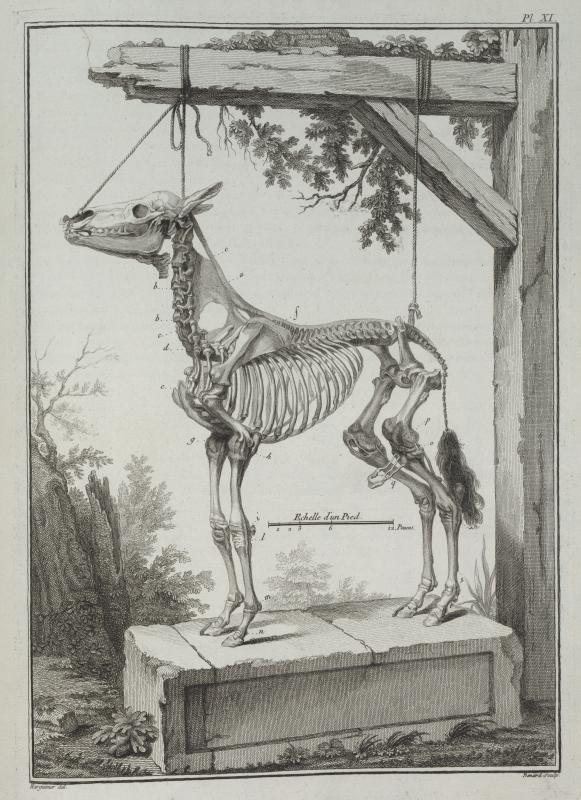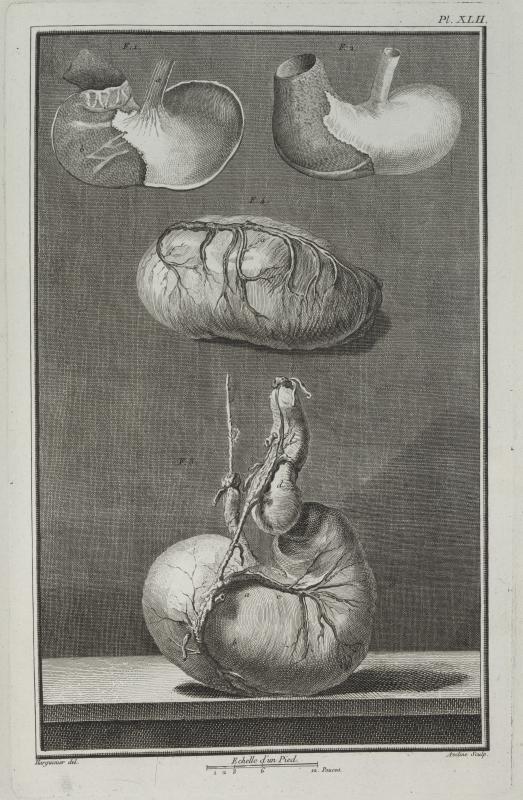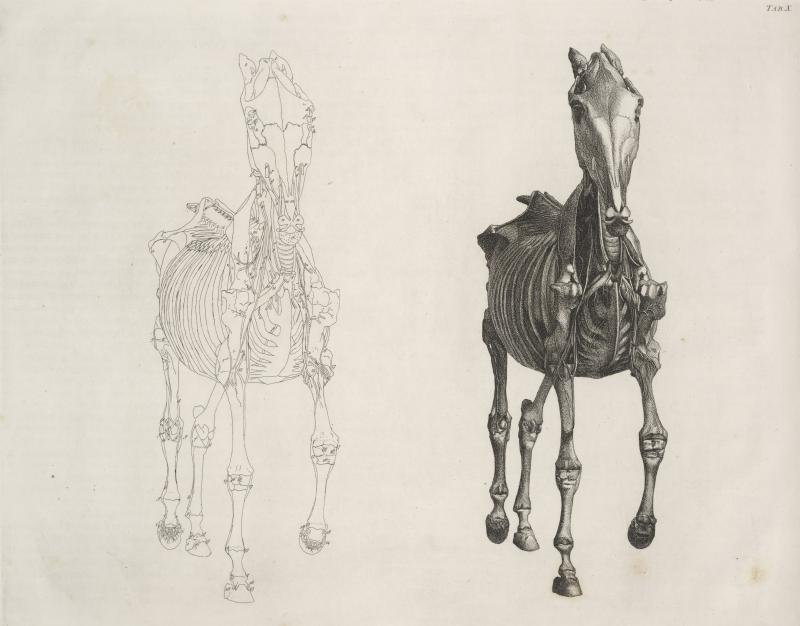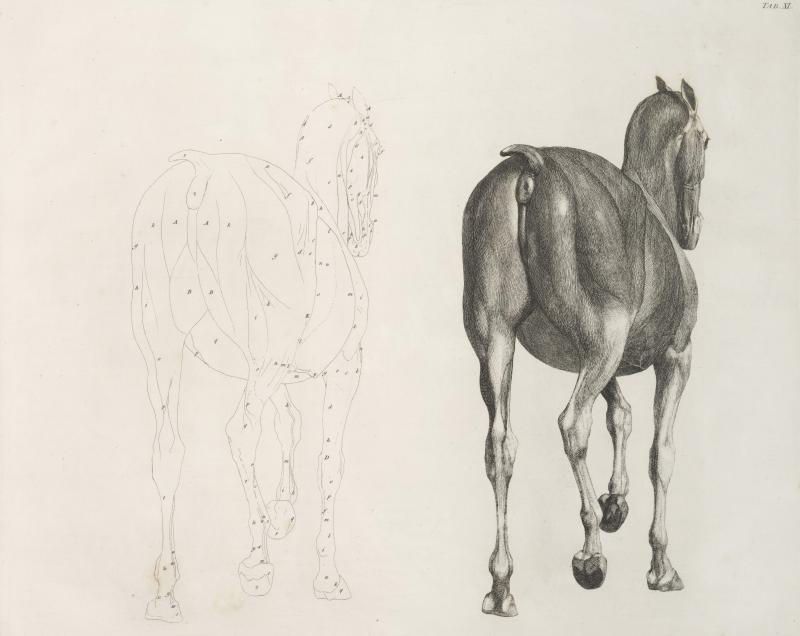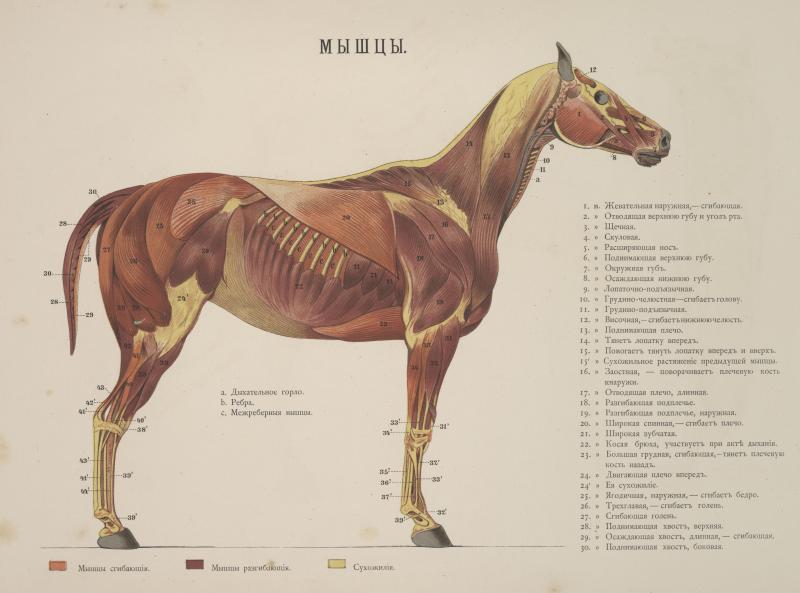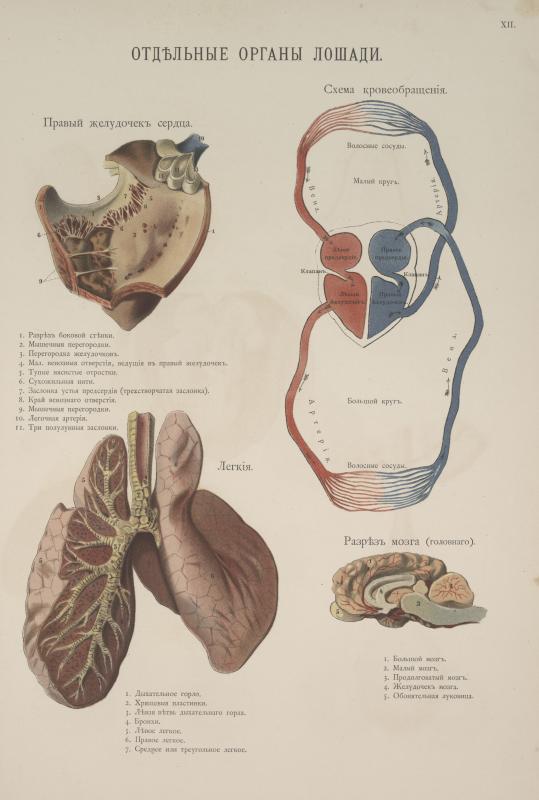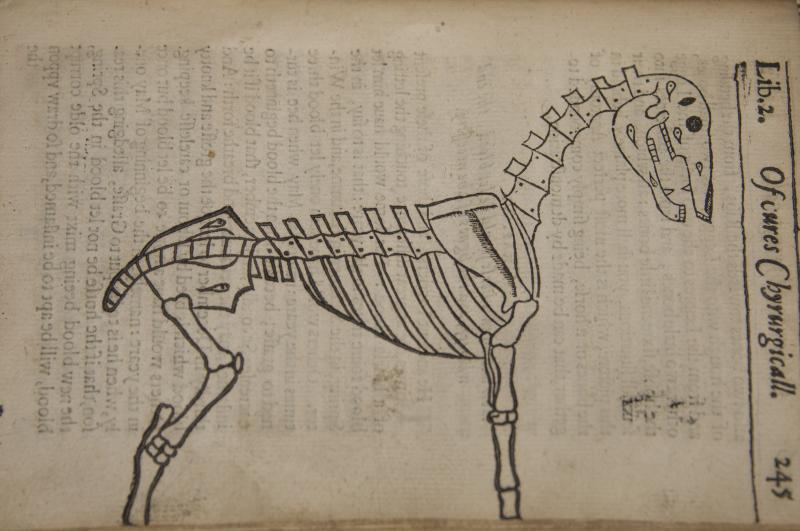Development of the Veterinary Profession
References to veterinary practice can be tracked throughout the oldest records of civilization, all the way back to the Egyptian papyrus of Kahun, dating back to 2160-1788 BC. In the medieval and Renaissance periods veterinarians relied on the Hippiatrica, a collection of Greek texts mainly concerning maladies of the horse. Until the eighteenth century much of the practitioners of veterinary medicine were farriers, who diagnosed and treated illnesses alongside their primary responsibilities of shoeing horses. With the establishment of the world’s first veterinary school in Lyon, France in 1761, a formal education system for veterinarians was established. Horses, due to their importance throughout human history, remained the center of the veterinary profession until well into the twentieth century. Many of the veterinary works published include the study of their anatomy as the basis for understanding and curing equine diseases.
- L'anatomie generale du cheval, Andrew Snape, 1734
- Translation of Andrew Snape's Anatomy of an horse into French by Francois A. de Garsault.
- Cours d'hippiatrique; ou, Traité complet de médecine des chevaux, orné de soixante & ciq planches gravées avec soin, Phillippe-Etienne LaFosse, 1772
- The most magnificent and luxurious work in the history of veterinary literature. The production - 'a veritable monument to Hippologie' - cost LaFosse himself some 70,000 French Livres.
- The anatomy of the horse, George Stubbs, 1766
- George Stubbs created this anatomical guide for use by both artists and veterinarians. Creation of this atlas took six years, as Stubbs had to carry his subjects up two flights of stairs to his studio in a remote farmhouse for dissection and careful engraving. Only 150 copies of this first edition were produced.
- Ippologicheskiĭ atlas dli͡a nagli͡adnago izucheni͡ia verkhovoĭ loshadi, sostavil General-Maior Bild́erling, 1889
- The Ippologichesky Atlas is a large full-color "hippological atlas" prepared for use by the cadets at the Nicholas Cavalry School in Russia. The atlas addresses anatomy, points, teeth, color, conformation and proportions, stabling, the foot and shoeing, the mechanics of movement, transport, breeds and their uses, breeding, and cross-country jumping.
- Markhams Maister-peece, Gervase Markham, 1631
- This book was the scourge of veterinary literature for 200 years. Available through 21 editions, no single work has done more damage to veterinary progress. Gervase Markham was notorious for crude and disgusting rememdies, and most of the material in his "maister-peece" was pirated from other sources.



